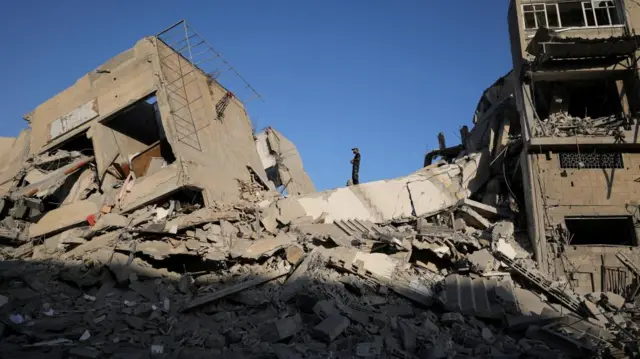Introduction
Chronic kidney disease (CKD) has emerged as a significant global health burden, affecting approximately 10% of the global population.1,2 The rising prevalence of CKD, driven by various underlying diseases, has placed immense pressure on healthcare systems worldwide. Among the etiologies of CKD, diabetic nephropathy (DN) is the leading cause, particularly in individuals with type 2 diabetes mellitus (T2DM).3,4 DN is characterized by persistent albuminuria, declining estimated glomerular filtration rate (eGFR), and histopathological changes such as glomerular hypertrophy and mesangial expansion.5 Without intervention, DN often progresses to end-stage kidney disease (ESKD) and renal failure, necessitating renal replacement therapy, including dialysis or transplantation. The increasing prevalence of T2DM, coupled with suboptimal glycemic and blood pressure (BP) control, has significantly contributed to the growing global burden of CKD.6–8
Notably, approximately 40% of patients with T2DM progress to T2DM-associated nephropathy (T2DN).9 This high prevalence highlights the multifactorial pathogenesis of DN, which extends beyond hyperglycemia-induced renal damage to involve other modifiable and non-modifiable risk factors. These include hypertension and obesity, both shown to exacerbate glomerular injury through haemodynamic stress and adipokine-mediated inflammation;10 dyslipidemia, particularly elevated triglyceride-rich lipoproteins, which may accelerate tubulointerstitial fibrosis; smoking, which promotes oxidative stress and endothelial dysfunction;11 and genetic susceptibility, including polymorphisms in genes such as uromodulin, which may interact with metabolic stressors to influence renal outcomes.12 Despite advancements in glucose-lowering and renin-angiotensin-aldosterone system (RAAS)-inhibiting therapies, the residual risk of renal progression remains substantial in patients with T2DM.13 This underscores the critical need to identify and address additional contributing factors to develop effective prevention and management strategies. In recent years, growing attention has been paid to the multimorbidity profiles of patients with T2DN, who are often present with overlapping complications such as cardiovascular disease, obesity, and chronic inflammation.14 Mechanistic insights into the early pathogenesis of DN have identified glomerular lesions as one of the earliest structural changes, mediated in part by mechanically sensitive signaling pathways.15 Emerging evidence also implicates elevated body mass index (BMI) and hypertension as critical drivers of CKD progression.16,17 However, the interplay between these risk factors, their genetic underpinnings, and their relative impacts across sociodemographic strata remain poorly understood. Additionally, the heterogeneity in disease presentation and progression necessitates further investigation into personalized therapeutic approaches.
This study aims to provide a comprehensive analysis of T2DN by leveraging diverse data sources, including the 2021 Global Burden of Disease (GBD) study,18 Mendelian randomization (MR) analysis, the National Health and Nutrition Examination Surveys (NHANES) database,19 and real-world clinical cohorts. Our objectives are threefold: first, to characterize the global trends in T2DN burden and their implications for public health; second, to evaluate the causal relationships between genetic determinants and disease progression; and third, to explore clinical characteristics and modifiable risk factors associated with T2DN. By identifying and quantifying these factors, this research seeks to inform the development of targeted prevention and management strategies tailored to high-risk populations.
Material and Methods
GBD Database Study
The 2021 GBD Study, led by the Institute for Health Metrics and Evaluation (IHME) in the United States, provides the most recent assessments of disease prevalence, mortality, and burden at global, regional, and national levels. We collected data on T2DN (coded as E11.2 in the 10th revision of the International Classification of Diseases [ICD-10]) from 1990 to 2021, including prevalence, incidence, mortality, disability-adjusted life years (DALYs) per 100,000 population, and population attributable fraction (PAF) of T2DN risk factors. The analysis was conducted at both global and five Sociodemographic Index (SDI) levels. SDI is a composite measure of development closely linked to health outcomes and was developed by GBD researchers. Based on SDI scores, countries and regions were classified into five groups: low SDI (0–0.4658), low-middle SDI (0.4658–0.6188), middle SDI (0.6188–0.7120), high-middle SDI (0.7120–0.8103), and high SDI (0.8103–1). Subgroup analyses were also conducted for males and females.
MR Database Study
MR analysis is a method used to investigate causal relationships between phenotypes at the genetic level. It involves selecting phenotype-associated single nucleotide polymorphisms (SNPs) as instrumental variables while ensuring that they adhere to the principles of relevance, independence, and exclusion.20 Data for blood glucose-related traits were sourced from widely used diabetes-related databases, Diagram and MAGIC,21 with Xue A et al’s study serving as validation data for T2DM.22 Genetic data for systolic blood pressure (SBP) and diastolic blood pressure (DBP) were retrieved from the International Consortium of Blood Pressure (ICBP), while BMI data were obtained from MAGIC (the Meta-Analyses of Glucose and Insulin-related traits Consortium). CKDGen provided data on kidney function,23 and FinnGen data on diabetic nephropathy were used for supplementary validation,24 (Supplementary Table 1). The significance threshold was determined by selecting independent variants in linkage disequilibrium (r2 < 0.001) and choosing SNPs as instrumental variables at a standard significance level (p < 5e−8). An F-value greater than 10 was set to ensure the robustness of the instrumental variables. Mendelian randomization analyses were conducted using inverse variance weighting (IVW), weighted median estimator (WME), MR-Egger regression (MR-ER), Simple Mode, and Weighted Mode, followed by sensitivity analysis25 The MR Pleiotropy Residual Sum and Outlier (MR-PRESSO) method was employed to detect and correct outliers in the IVW linear regression.26 Two-sample Mendelian randomization (TSMR) and multi-sample Mendelian randomization (MVMR) were used in this study to assess the effects of blood glucose-related traits, diabetes, BP, and BMI on DN.
NHANES Database Study
The NHANES database employs a rigorous sampling methodology to select a representative cohort from the US population and conducts comprehensive assessments of their health and nutritional status. The study protocol was approved by the NCHS Ethics Review Board, and no additional ethical approval was required for this analysis. This study adhered to the PECO principles for observational research, with data inclusion structured into Population (P), Exposure (E), Covariates (C), and Outcome (O). Participants aged ≥18 years were diagnosed with T2DM if they met at least one of the following criteria: a prior diagnosis of diabetes, use of insulin or oral hypoglycemic agents, fasting plasma glucose ≥7.0 mmol/L (126 mg/dL), random blood glucose ≥11.1 mmol/L (200 mg/dL), 2-hour glucose during an oral glucose tolerance test ≥11.1 mmol/L (200 mg/dL), or glycated hemoglobin (HbA1c) >6.5%. Diabetic kidney disease (DKD) was diagnosed if the urinary albumin-to-creatinine ratio (ACR) exceeded 30 mg/g or if the eGFR was <60 mL/min/1.73 m². Hypertension was defined as having a history of hypertension, use of antihypertensive medications, SBP ≥140 mmHg, or DBP ≥90 mmHg. BMI was calculated as weight (kg) divided by height squared (m²) and categorized based on the World Health Organization (WHO) criteria: underweight (<18.5 kg/m²), normal weight (18.5–24.9 kg/m²), overweight (25.0–29.9 kg/m²), and obese (≥30 kg/m²). The patient inclusion and exclusion flowchart is presented in Supplementary Figure 1.
In addition, demographic characteristics such as age, sex, race, education, and marital status, as well as smoking history, alcohol consumption history, history of heart failure, stroke, and liver disease, were included. These data were obtained from standardized questionnaires, laboratory testing, medical records, and interviews with participants and healthcare providers.
Clinical Cohort Study
Clinical data of patients with T2DM admitted to the Department of Endocrinology at the Second Hospital of Shanxi Medical University from May 2024 to August 2024 were collected and defined as the 2H-SXMU cohort. The inclusion criteria for the clinical cohort were as follows: (1) adults aged 18–85 years, regardless of sex; (2) Patients with T2DM diagnosed according to WHO 2019 criteria; definition consistent with the aforementioned NHANES database study; (3) ability to provide written informed consent and comply with study procedures. The exclusion criteria included: (1) patients with active infections, malignancies, severe arrhythmias, psychiatric disorders, or a history of alcohol or drug abuse; (2) those with heart failure classified as New York Heart Association (NYHA) Class II–IV; (3) patients with incomplete medical records or unavailable laboratory data at baseline. This study screened consecutively hospitalized patients from the electronic medical record system of the Second Hospital of Shanxi Medical University. Two senior nephrologists independently reviewed the original diagnostic information to ensure that all T2DN cases met the established diagnostic criteria for diabetic nephropathy. Patients with other potential causes of chronic kidney disease (such as glomerulonephritis, IgA nephropathy, or polycystic kidney disease) were preliminarily excluded. Additionally, cases with missing key clinical variables (eg, urinary albumin or HbA1c) were removed to enhance the statistical stability and robustness of the model. The data analysis methods, were consistent with those described in the NHANES database study. This study was reviewed and approved by the Ethics Committee of the Second Hospital of Shanxi Medical University, and informed consent was obtained from all patients ([2024]YX116). In addition, in analyses utilizing the 2H-SXMU clinical cohort, this study ensured statistical power through rigorous variable selection criteria. This study excluded cases with missing key variables and applied multivariable regression. This comprehensive analytical approach significantly strengthens the robustness and validity of our statistical inferences.
Statistical Analysis
R (version 4.4.1) for data collection and visualization analysis in analysis of GBD dataset. The MR analyses were conducted using the TwoSampleMR (version 0.6.8) and MRPRESSO packages (version 1.0) in R (version 4.4.1). For comparative analysis between two groups of categorical variables without paired elements and no ordinal relationship between the independent and dependent variables, the chi-square test was employed. For continuous data, the type of test was determined by the distribution: an independent t-test was used if both groups exhibited normal distribution, whereas the Mann–Whitney U-test was applied if either group displayed non-normal distribution. For multiple groups of continuous data, one-way analysis of variance (ANOVA) was used when the data were normally distributed and had homogeneity of variances. For correlation analysis, Pearson correlation coefficients were used to assess linear relationships for bivariate normal-distributed data, while Spearman’s rank correlation coefficients were applied for non-normally distributed data or ordinal variables. For causality analysis, the choice of regression model depended on the type of dependent variable. For continuous dependent variables, univariate or multivariate linear regression was performed based on the number of independent variables. For categorical dependent variables, univariate or multivariate logistic regression was conducted accordingly. To evaluate the predictive performance of models, receiver operating characteristic (ROC) curve analysis was employed, and the area under the curve (AUC) was calculated. Data analysis and visualization were performed using IBM SPSS Statistics version 26 and GraphPad Prism version 8.0.2. Results with P < 0.05 were considered statistically significant.
Results
Global Distribution and Key Attributable Risk Factors for DN
Globally, the disease burden of T2DN is rapidly increasing year by year (Figure 1A). From 1990 to 2021, the global prevalence of T2DN per 100,000 population rose from 2105.68 (1926.11, 2310.18) to 2243.43 (2070.02, 2419.54). The annual incidence of T2DN increased from 29.06 (26.27, 31.92) to 43.14 (39.83, 46.20), the mortality rate from 5.73 (4.81, 6.83) to 10.25 (8.62, 12.15), and the rate of DALYs from 159.46 (135.24, 186.31) to 242.06 (207.79, 281.24). Moreover, this rapid growth in disease burden is more pronounced in countries or regions with higher SDI levels. In higher SDI regions, the sex disparity in the T2DN disease burden is relatively small, whereas this disparity becomes increasingly evident as SDI levels decrease. In lower SDI countries or regions, the disease burden is more severe among male patients with T2DN.
 |
Figure 1 Global epidemiological trends of T2DN. (A) Prevalence, incidence, mortality, and disability-adjusted life year (DALY) rates of T2DN globally and across five SDI regions from 1990 to 2021. (B) Population attributable fraction (PAF) for deaths and DALYs due to T2DN globally and across five SDI regions from 1990 to 2021.
|
The leading risk factor for T2DN remains high fasting plasma glucose. As shown in Figure 1B, from 1990 to 2021, the global PAF for deaths due to T2DN attributed to high fasting plasma glucose increased from 0.80 to 0.90, while the PAF for DALYs rose from 0.76 to 0.87. This upward trend is evident across countries and regions with varying SDI levels. Additionally, high BMI and high SBP are significant risk factors for T2DN. In 2021, the PAF for deaths due to T2DN attributed to high BMI was 0.36, and for high SBP, it was 0.11. It is noteworthy that the PAF of these risk factors exhibit variations by sex and region (Supplementary Figure 2). However, with increasing SDI levels, the PAF for high fasting plasma glucose and high BMI tend to increase, whereas the PAF for high SBP decreases.
TSMR Revealed the Promoting Factors of DN Occurrence at the Genetic Level
TSMR is applied to explore whether potential influencing factors have causal effects on DN risk (Figure 2). In the blood glucose-related phenotypes, FG (β = 1.351, P = 2.78e-4), FI (β = 2.543, P = 1.20e-5), and T2DM (OR = 2.280, P = 4.14e-29) levels show a positive causal relationship with the occurrence of DN. However, 2hGlu (β = 0.500, P = 0.160) and HbA1c (β = 1.000, P = 0.112) do not exhibit a causation with DN outcomes. Additionally, increased SBP (β = 0.031, P = 1.62e-4) and BMI (β = 1.225, P = 4.14e-20) at the genetic level have a slight promoting effect on DN (Figure 3A), and these results are also applicable in DN outcome from FinnGen (Figure 3B).
 |
Figure 2 Genetic causation for potential influencing factors and diabetic nephropathy-related traits using IVM method. Each dot represents the causal relationship between exposure and outcome, the size of the dot represents the absolute value of the effect size, and the color of the origin demonstrates the P value.
Abbreviations: FI, Fasting Insulin; FG, Fasting Glucose; 2hGlu, 2hr Glucose post-oral Glucose Challenge; HbA1c, glycated hemoglobin; T2D, Type 2 Diabetes; DM2, Type 2 Diabetes Mellitus; SBP, Systolic blood pressure; DBP, Diastolic blood pressure; BMI, Body Mass Index; BUN, Blood Urea Nitrogen; eGFR, estimated glomerular filtration rate; CKD, chronic kidney disease; DN, Diabetic nephropathy.
|
 |
Figure 3 Continued.
|
 |
Figure 3 Forest plot of potential influencing factors and DN. (A) Forest plot of potential influencing factors and DN1. (B) Forest plot of potential influencing factors and DN2.
Abbrevaitions: FI, Fasting Insulin; FG, Fasting Glucose; 2hGlu, 2hr Glucose post-oral Glucose Challenge; HbA1c, glycated hemoglobin; T2D, Type 2 Diabetes; DM2, Type 2 Diabetes Mellitus; SBP, Systolic blood pressure; DBP, Diastolic blood pressure; BMI, Body Mass Index; DN, Diabetic nephropathy.
|
In addition, the increase in DBP (β = −6.6e-4, P = 0.025) acts as a promoting factor for the decline in eGFR, whereas blood glucose-related phenotypes, as well as BMI and SBP, do not show a causation with eGFR changes (Supplementary Figure 3). Conversely, T2DM (OR = 1.008, P = 1.39e-3), SBP (β = 9.529e-4, P = 0.002), DBP (β = 0.001, P = 0.013), and BMI (β = 0.017, P = 3.57e-5) have a positive causal relationship with the increase in BUN (Supplementary Figure 4). Accordingly, blood glucose-related phenotypes and T2DM do not show a direct causal relationship with CKD, but SBP (β = 0.014, P = 2.77e-6), DBP (β = 0.020, P = 5.46e-5), and BMI (β = 0.156, P = 5.80e-6) all have a slight promoting effect on CKD (Supplementary Figure 5). This difference is intriguing. The progression of DN is directly promoted by hyperglycemia and insulin resistance, whereas the occurrence of CKD and the deterioration of kidney function do not rely entirely on blood glucose levels. Sensitivity analysis confirmed the robustness of the statistical data (Supplementary Table 2 and Supplementary Figures 6–11), which enhances the credibility and generalizability of these results.
MVMR Revealed BP and BMI as Potential Modulators of DN Risk in T2DM Patients
Further MVMR analysis provides new evidence that after adjusting for the effects of BMI or BP, the causation between eGFR levels, BUN levels, and CKD risk and T2DM remains statistically insignificant (Supplementary Tables 3–5).
The onset of T2DM increases the risk of DN (OR = 1.429, P = 4.34e-10), and this causation persists even after adjusting for various confounding factors (Tables 1 and 2). Excluding the effects of BMI (OR = 1.387, P = 2.43e-12) or BP (OR = 1.413, P = 7.06e-12) reduces the effect of T2DM on DN risk, suggesting that BMI and BP play a significant modulating role in the T2DM-DN relationship. After adjusting for BMI or BP, the previously overestimated promoting effect of T2DM may be corrected or attenuated (Table 2). However, when using the DN database from Sakaue S et al as the outcome, the adjusted promoting effect increases (Table 1).
 |
Table 1 Multivariable MR Analyses of DN1 Adjusted for Covariates on DN1 as the Outcome
|
 |
Table 2 Multivariable MR Analyses of DN2 Adjusted for Covariates on DN2 as the Outcome
|
 |
Table 3 Clinical Baseline Characteristics of T2DM Patients in the NHANES Database
|
NHANES Database Identified the Impact of BP and BMI on Renal Outcomes in T2DM Patients
This cross-sectional analysis, derived from the NHANES database, included 7,618 patients with T2DM from 2001 to 2018. The baseline characteristics of the study population are presented in Table 3. Compared to the T2DM without DN group, the T2DM with DN group was older (69.35 vs 58.63 years, P < 0.001) and showed differences in race, education, marital status, BP, smoking history, alcohol consumption history, history of heart failure, and history of stroke (Supplementary Figure 12A and B). Notably, the prevalence of hypertension was significantly higher in the T2DM with DN group (80.21% vs 60.44%, P < 0.001), with elevated SBP (136 vs 128 mmHg, P < 0.001) and reduced DBP (65.33 vs 70.67 mmHg, P < 0.001) (Supplementary Figure 12C and D). However, no significant differences were observed in BMI, either as categorical or continuous data (Supplementary Figure 12E).
When stratified by BP levels, eGFR in the T2DM with DN group remained relatively stable, while it declined with increasing BP in the T2DM without DN group (Figure 4A). Conversely, UACR increased with rising BP in the T2DM with DN group, whereas it remained relatively unchanged in the T2DM without DN group (Figure 4B). Spearman correlation analysis revealed that eGFR was negatively correlated with SBP (r = −0.1795, P < 0.001) and positively correlated with DBP (r = 0.2547, P < 0.001) (Figure 4C and D). UACR was primarily positively correlated with SBP (r = 0.3099, P < 0.001), with no significant correlation observed with DBP (Figure 4E and F). These findings suggest that SBP predominantly impacts urinary albumin levels. Interestingly, BMI was positively correlated with improved renal function (Figure 4G–J). Additionally, after stratifying CKD stages, SBP was highest in CKD stage 2, DBP was highest in CKD stage 1, and BMI was highest in CKD stage 1 (Figure 4K and L).
 |
Figure 4 Clinical data analysis of T2DM patients from the NHANES database (2001–2018). (A and B) Correlation analysis between categorical blood pressure data and eGFR and UACR. (C–F) Correlation analysis between continuous blood pressure data and eGFR and UACR. (G and H) Correlation analysis between categorical BMI data and eGFR and UACR. (I and J) Correlation analysis between continuous BMI data and eGFR and UACR. (K and L) Correlation analysis between CKD stages and continuous blood pressure and BMI data. (M and N) ROC curves for predictive models combining different clinical characteristics for renal outcomes in T2DM patients.
Abbreviations: HF, history of heart failure; S, history of stroke.
|
In univariate linear regression analysis (Supplementary Table 6), eGFR was found to be associated with age, sex, race, marital status, both categorical and continuous BMI data, both categorical and continuous BP data, smoking history, alcohol consumption history, history of heart failure, and history of stroke. UACR was associated with education level, categorical BP data, SBP, history of heart failure, and history of stroke. In multivariate linear regression analysis (Supplementary Table 7), various models were constructed by systematically excluding variables. The final model identified age, sex, race, both categorical and continuous BMI data, history of heart failure, and history of stroke as predictors of eGFR. For UACR, significant associations were observed only with categorical BP data or SBP.
In univariate logistic regression analysis (Supplementary Table 8), the occurrence of DN in T2DM patients was associated with age, race, education level, marital status, categorical BMI data, both categorical and numerical BP data, smoking history, alcohol consumption history, history of heart failure, and history of stroke. In multivariate logistic regression analysis (Supplementary Table 9), after systematically excluding variables through multiple models, two final models were established: one including age, categorical BP data, history of heart failure, and history of stroke, and the other including age, SBP, DBP, history of heart failure, and history of stroke as predictors of renal outcomes. Subsequently, we constructed ROC curves (Figure 4M and N; Supplementary Table 10), with the outcome variable being the presence of DN. The AUC for categorical BP data was 0.598, for SBP it was 0.616, for the combination of age, SBP, history of heart failure, and history of stroke it was 0.759, and for the combination of age, categorical BP data, history of heart failure, and history of stroke it was 0.761. These results indicate that the combination of age, categorical BP data, history of heart failure, and history of stroke demonstrates good predictive ability for renal outcomes in T2DM patients.
A Real-World Observational Study Identified Variations in Renal Function Among T2DM Patients
The baseline characteristics of the 2H-SXMU clinical cohort are presented in Table 4. Significant differences were observed between the T2DM with DN group and the T2DM without DN group in terms of sex, disease duration, smoking history, alcohol consumption history, BP, diabetic retinopathy, cerebrovascular disease, and lower extremity revascularization history. Additionally, fasting blood glucose levels were higher in the T2DM with DN group compared to the T2DM without DN group (7.800 vs 7.360 mmol/L, P = 0.0234), while there was no statistically significant difference in HbA1c levels (Figure 5A and B). Compared to the T2DM without DN group, the T2DM with DN group exhibited significantly higher levels of UACR (100.8 vs 4.050 mg/g, P < 0.001) and serum creatinine (Scr) (68.50 vs 59.00 μmol/L, P < 0.001) (Figure 5C and D). Correlation analysis showed that UACR was significantly associated with categorical BP data, while Scr was significantly associated with both categorical BP data and continuous BMI data (Supplementary Table 11).
 |
Table 4 Clinical Baseline Characteristics of T2DM Patients in the 2H-SXMU Clinical Cohort
|
 |
Figure 5 Clinical data analysis of T2DM patients from the 2H-SXMU clinical cohort. (A) Differences in fasting glucose levels between T2DN patients and other T2DM patients. (B) Differences in glycated hemoglobin (HbA1c) levels between T2DN patients and other T2DM patients. (C) Differences in UACR levels between T2DN patients and other T2DM patients. (D) Differences in Scr levels between T2DN patients and other T2DM patients.
|
Discussion
In this study, we integrated multiple databases and real-world clinical data to investigate the mediating roles of BP and BMI in the progression of T2DM to T2DN. This study is the first to integrate multi-ethnic and multi-regional population data to analyze the roles of BMI and hypertension in the progression from T2DM to T2DN, with consistent conclusions obtained across these diverse datasets. The MR data were derived from European populations, the NHANES database represents North American populations, and real-world data reflect East Asian populations. Additionally, GBD data provide analyses of the incidence, mortality, and major risk factors of T2DM among global populations.
Through an analysis of the 2021 GBD database, we depicted the global epidemiological landscape of T2DN, revealing an increasing global disease burden with notable regional and sex disparities. Additionally, we identified high fasting plasma glucose, high BMI, and high SBP as the primary attributable risk factors for mortality in T2DN patients. Notably, in high-development regions, high fasting plasma glucose and high BMI exert more substantial impact effects, while the influence of SBP is relatively diminished. These observed variations should guide our focus toward region-specific health policies and their underlying mechanisms across different SDI settings.
Subsequently, MR analysis confirmed the critical roles of high BMI and hypertension in promoting the progression of T2DM to T2DN. Notably, the removal of these risk factors reduced the likelihood of progression. MR analysis revealed that glycemic phenotypes exhibit no direct causal effect on CKD, whereas they demonstrate a significant direct causal relationship with T2DN onset. The distinct pathogenic drivers between T2DN and CKD challenge the traditional notion that hyperglycemia is the sole primary cause of kidney disease. They may also be influenced by factors such as medication-induced damage.
Furthermore, by quantifying the causal effects of different glycemic phenotypes and T2DN at the genetic level, this finding will facilitate clinical evaluation of the disease-predictive value of various biomarkers. Interestingly, FG, FI, and T2DM demonstrate significant and strong causal effects on DN, while 2hGlu and HbA1c do not. These complex changes may be attributed to pathological and physiological alterations at different stages of DN progression, such as early-stage insulin resistance and later-stage β-cell failure; Meanwhile, biomarker variability or differences in detection sensitivity may have an impact. The study found that elevated DBP accelerates early-stage eGFR, while blood glucose and BMI contribute to late-stage renal function deterioration (BUN), suggesting distinct pathogenic mechanisms at different stages of kidney injury.
Additionally, while HbA1c reflects a 3-month average blood glucose level, it may obscure peak renal damage caused by hypertension. Fluctuating hyperglycemia is more likely to induce oxidative stress damage than sustained hyperglycemia.27 Furthermore, 2hGlu is significantly influenced by dietary factors. These negative results instead suggest that postprandial glucose management has limited value in DN prevention, highlighting the clinical need to focus on measuring and controlling blood glucose under different physiological states.
Furthermore, the results of MVMR showed that after changing the database source, the effect of corrected blood glucose on T2DN changed. This discrepancy existed since DN occurrence is a binary variable, which fails to capture the complexity of its pathological progression. For instance, in the early stages of DN, the effects of BMI and BP may be relatively indirect. After adjustment, T2DM may reveal a more direct effect on kidney function, thereby amplifying the promoting effect of diabetes. These findings highlight the need to explore disease characteristics at different stages of DN and analyze the modulating effects of BMI and BP at the genetic level in the progression of T2DM to DN in the future.
We further analyzed clinical data from the NHANES database (2001–2018), encompassing 7,618 T2DM patients, and observed that T2DN patients exhibited higher average SBP compared to other T2DM patients. Moreover, as SBP increased, renal function in T2DM patients showed a declining trend, characterized by a reduction in eGFR and an elevation in UACR. Interestingly, renal function appeared to improve with increasing BMI in T2DM patients. These observations may be related to systemic dysfunction in patients with advanced CKD. Using ROC curve analysis, we developed a predictive model that demonstrated the ability to predict renal outcomes in T2DM patients by combining age, categorical BP data, history of heart failure, and history of stroke.
Finally, findings from the 2H-SXMU clinical cohort reinforced that the proportion of T2DN patients with hypertension was significantly higher than that of other T2DM patients, driving a shift in DN risk screening from sole blood glucose monitoring to comprehensive metabolic-vascular management. Our findings are consistent with recent studies in Chinese populations. For example, a national study28 reported increasing incidence and mortality of type 2 diabetes-related CKD among young and middle-aged adults. The INDEED cohort further showed that patients with persistently high systolic blood pressure trajectories had more rapid renal function decline,27 in agreement with our MR results. Additionally, exercise interventions in Chinese CKD patients have been shown to improve eGFR and reduce BMI and blood pressure,29 reinforcing the relevance of early intervention on modifiable pathways.
Our results showed that the presence of hypertension significantly increased the likelihood of developing DN among T2DM patients. This finding is consistent with previous studies showing that hypertension contributes to glomerular hyperfiltration, increased intraglomerular pressure, and endothelial damage, all of which accelerate renal dysfunction.30,31 Furthermore, hypertension often coexists with other metabolic disturbances, such as hyperglycemia, dyslipidemia, and inflammation, resulting in a synergistic effect that exacerbates kidney damage32,33. Therefore, aggressive blood pressure management in T2D patients is critical for delaying or preventing CKD progression. Antihypertensive therapies, particularly RAAS inhibitors, have shown renal protective effects and should be a cornerstone of treatment in these patients. Interestingly, not all T2DM patients with hypertension progressed to DN, suggesting the involvement of other protective or compensatory mechanisms. One key limitation of this study is its cross-sectional design, which lacks time-series data to capture the temporal progression of DN. Furthermore, variability in disease progression could be attributed to differences in glycemic control, antihypertensive treatment, genetic predisposition, and lifestyle factors. Hyperglycemia is an independent prognostic factor of DN.34 Intensive blood glucose control during the early stages of the disease demonstrates a prolonged and favorable impact on reducing the risk of DN development.35,36 Certain genetic variants or epigenetic modifications may confer different susceptibility to kidney damage in T2DM patients.32 In addition, patients with lower systemic inflammation may have a reduced risk of developing DN.33 Prospective studies with long-term follow-up are needed to investigate these influencing factors and elucidate their underlying mechanisms. Contrary to conventional understanding, some T2DM patients without hypertension still progress to DN. This finding highlights the importance of other pathogenic mechanisms independent of hypertension, such as hyperglycemia-induced vascular and glomerular damage,33 and albuminuria-induced tubular inflammation and interstitial fibrosis.37 Additionally, the lack of sufficient follow-up time in cross-sectional studies may fail to capture the development of hypertension later in the disease course. Therefore, for T2DM patients without hypertension, early detection and management of hyperglycemia, proteinuria, and other risk factors remain essential.
BMI plays a complex and multifaceted role in the progression of T2DM to T2DN.38–40 Our findings, derived from an integration of global epidemiological, genetic, and clinical data, provide new insights into the impact of BMI on renal outcomes in T2DM patients, highlighting both its direct and indirect effects. The 2021 GBD database analysis identified high BMI as one of the leading attributable risk factors for mortality in T2DN. MR analysis further supported the causal role of BMI in promoting the progression of T2DM to T2DN. Notably, high BMI may exacerbate renal injury through multiple mechanisms, including systemic inflammation, insulin resistance, and alterations in adipokine signaling. These factors collectively contribute to glomerular hyperfiltration, increased intraglomerular pressure, and eventual structural damage, all of which are hallmarks of diabetic nephropathy.16,41–44 Interestingly, MR findings suggest that removing the effect of BMI attenuates the progression of T2DM to T2DN, underscoring its potential as a modifiable risk factor. This highlights the critical importance of weight management in T2DM patients as a strategy to mitigate the risk of renal complications. Analysis of NHANES data revealed an intriguing association between BMI and renal function in T2DM patients. Contrary to expectations, higher BMI was associated with improved renal outcomes, as evidenced by higher eGFR and lower UACR levels in patients with elevated BMI. This phenomenon, often referred to as the “obesity paradox”, has been reported in other chronic diseases, including cardiovascular disease and ESKD.45–49 Possible explanations include the protective effects of increased energy reserves, enhanced nutritional status, and the differential impact of fat distribution patterns (eg, visceral vs subcutaneous adiposity) on metabolic and renal health.50–52 However, this protective association diminishes in advanced stages of CKD, as evidenced by the 2H-SXMU clinical cohort findings, where T2DN patients exhibited significantly worse renal outcomes regardless of BMI. The dual nature of BMI’s role—both as a risk factor and as a potential protective marker—emphasizes the need for a nuanced approach to weight management in T2DM patients. While weight loss is generally recommended to reduce insulin resistance and lower the risk of CKD progression, caution should be exercised to avoid excessive weight loss, which may lead to sarcopenia and worsen outcomes.53,54 Personalized interventions that consider individual patient characteristics, such as body composition, fat distribution, and comorbidities, are critical for optimizing renal and metabolic health.
This study leverages diverse data sources, including the GBD study, Mendelian randomization, NHANES, and real-world clinical cohorts, to provide a multifaceted analysis of T2DN. The integration of global epidemiological data with genetic and clinical findings strengthens the robustness and generalizability of our conclusions. However, several limitations warrant consideration. First, although Mendelian randomization and multivariable models were employed to reduce bias, the possibility of residual confounding cannot be fully excluded. Second, the integration of multiple data sources may introduce heterogeneity in case definitions, variable measurements, and population structures. Third, the generalizability of findings may be limited, particularly for the hospital-based cohort, which reflects a specific geographic and demographic context.
Conclusions
In conclusion, this study confirmed the pivotal roles of BP and BMI in the progression of T2DM to T2DN. By integrating genetic predisposition and epidemiological insights, it underscores the complex interplay of genetic, environmental, and metabolic factors in the development and progression of T2DN. This study provides evidence-based support for the formulation of global public health policies and T2DM management in clinical practice.
Data Sharing Statement
The raw data supporting the findings of this study are derived from multiple publicly available databases. The primary data were obtained from the Global Burden of Disease (GBD) Data Tool repository (http://ghdx.healthdata.org/gbd-results-tool). For the Mendelian randomization analyses, genetic association estimates for type 2 diabetes were sourced from the MAGIC (https://magicinvestigators.org/downloads/index.html) and DIAGRAM (https://diagram-consortium.org/pub.html) consortia; kidney function related data were obtained from the CKDGen (https://ckdgen.imbi.uni-freiburg.de/) and FinnGen (https://www.finngen.fi/en/access_results) databases; and genetic instruments for blood pressure and BMI were acquired from the IEU OpenGWAS database (https://gwas.mrcieu.ac.uk/). Additionally, data used in the observational analyses are available from the NHANES database (https://www.cdc.gov/nchs/nhanes/index.htm). Further details or additional analytical datasets are available from the corresponding author (GZ) upon reasonable request.
Ethics Approval and Consent for Publication
This study was approved by the Ethics Review Committee of the Second Hospital of Shanxi Medical University ([2024]YX116) and was conducted in accordance with the ethical standards outlined in the Declaration of Helsinki. Informed consent was obtained from all participants.
Acknowledgments
The authors thank the patients and their families. The authors also extend their gratitude to the participants of the GBD database and the NHANES database for their invaluable contributions.
Author Contributions
Heng Wang, Keyi Fan and Yijie Ning contributed equally as joint first authors. Honglin Dong and Guoping Zheng contributed equally as joint corresponding authors. All authors made a significant contribution to the work reported, whether that is in the conception, study design, execution, acquisition of data, analysis and interpretation, or in all these areas; took part in drafting, revising or critically reviewing the article; gave final approval of the version to be published; have agreed on the journal to which the article has been submitted; and agree to be accountable for all aspects of the work.
Funding
This work was supported by the National Health and Medical Research Council (NHMRC) of Australia (Grant No. 2027965), the Translational Medicine Engineering Research Center for Vascular Diseases of Shanxi Province, China (Grant No. 2022017), and the Construction and Demonstration of Molecular Diagnosis and Treatment Platform for Vascular Diseases in Shanxi Province, China (Grant No. SCP-2023-17).
Disclosure
The authors declare no competing interests.
References
1. Jadoul M, Aoun M, Masimango Imani M. The major global burden of chronic kidney disease. The Lancet Global Health. 2024;12(3):e342–e343. doi:10.1016/S2214-109X(24)00050-0
2. Bello AK, Okpechi IG, Levin A. An update on the global disparities in kidney disease burden and care across world countries and regions. The Lancet Global Health. 2024;12(3):e382–e395. doi:10.1016/S2214-109X(23)00570-3
3. Navaneethan SD, Zoungas S, Caramori ML. Diabetes Management in Chronic Kidney Disease: synopsis of the KDIGO 2022 Clinical Practice Guideline Update. Annals of Internal Medicine. 2023;176(3):381–387. doi:10.7326/M22-2904
4. de Boer IH, Khunti K, Sadusky T. Diabetes Management in Chronic Kidney Disease: a Consensus Report by the American Diabetes Association (ADA) and Kidney Disease: improving Global Outcomes (KDIGO). Diabetes Care. 2022;45(12):3075–3090. doi:10.2337/dci22-0027
5. Oshima M, Shimizu M, Yamanouchi M. Trajectories of kidney function in diabetes: a clinicopathological update. Nat Rev Nephrol. 2021;17(11):740–750. doi:10.1038/s41581-021-00462-y
6. de Boer IH, Khunti K, Sadusky T. Diabetes management in chronic kidney disease: a consensus report by the American Diabetes Association (ADA) and Kidney Disease: improving Global Outcomes (KDIGO). Kidney International. 2022;102(5):974–989. doi:10.1016/j.kint.2022.08.012
7. KL Ong, LK Stafford, SA McLaughlin, et al. Global, regional, and national burden of diabetes from 1990 to 2021, with projections of prevalence to 2050: a systematic analysis for the Global Burden of Disease Study 2021. Lancet. 2023;402(10397):203–234. doi:10.1016/S0140-6736(23)01301-6
8. Misra S, Ke C, Srinivasan S. Current insights and emerging trends in early-onset type 2 diabetes. The Lancet Diabetes & Endocrinology. 2023;11(10):768–782. doi:10.1016/S2213-8587(23)00225-5
9. Anders HJ, Huber TB, Isermann B, Schiffer M. CKD in diabetes: diabetic kidney disease versus nondiabetic kidney disease. Nat Rev Nephrol. 2018;14:361–377. doi:10.1038/s41581-018-0001-y
10. González-Pérez A, Saéz ME, Vizcaya D, Lind M, García Rodríguez LA. Impact of chronic kidney disease definition on assessment of its incidence and risk factors in patients with newly diagnosed type 1 and type 2 diabetes in the UK: a cohort study using primary care data from the United Kingdom. Prim Care Diabetes. 2020;14(4):381–387. doi:10.1016/j.pcd.2019.11.002
11. Sun J, Chen X, Liu T. Berberine Protects Against Palmitate-Induced Apoptosis in Tubular Epithelial Cells by Promoting Fatty Acid Oxidation. Med Sci Monit. 2018;24:1484–1492. doi:10.12659/MSM.908927
12. Kim GH, Jun JB. Altered Serum Uric Acid Levels in Kidney Disorders. Life (Basel). 2022;12(11):1891. doi:10.3390/life12111891
13. Vart P, Vaduganathan M, Jongs N. Estimated Lifetime Benefit of Combined RAAS and SGLT2 Inhibitor Therapy in Patients with Albuminuric CKD without Diabetes. Clin J Am Soc Nephrol. 2022;17(12):1754–1762. doi:10.2215/CJN.08900722
14. Kuan V, Denaxas S, Patalay P. Identifying and visualising multimorbidity and comorbidity patterns in patients in the English National Health Service: a population-based study. The Lancet Digital Health. 2023;5(1):e16–e27. doi:10.1016/S2589-7500(22)00187-X
15. Liu S, Zhao Y, Lu S. Single-cell transcriptomics reveals a mechanosensitive injury signaling pathway in early diabetic nephropathy. Genome Medicine. 2023;15(1):2. doi:10.1186/s13073-022-01145-4
16. Kjaergaard AD, Teumer A, Witte DR. Obesity and Kidney Function: a Two-Sample Mendelian Randomization Study. Clinical Chemistry. 2022;68(3):461–472. doi:10.1093/clinchem/hvab249
17. Ruilope LM, Agarwal R, Anker SD. Blood Pressure and Cardiorenal Outcomes With Finerenone in Chronic Kidney Disease in Type 2 Diabetes. Hypertension (Dallas, Tex: 1979). 2022;79(12):2685–2695. doi:10.1161/HYPERTENSIONAHA.122.19744
18. Murray CJL. Findings from the Global Burden of Disease Study 2021. Lancet (London, England). 2024;403(10440):2259–2262. doi:10.1016/S0140-6736(24)00769-4
19. Ahluwalia N, Dwyer J, Terry A, Moshfegh A, Johnson C. Update on NHANES Dietary Data: focus on Collection, Release, Analytical Considerations, and Uses to Inform Public Policy. Advances in Nutrition). 2016;7(1):121–134. doi:10.3945/an.115.009258
20. Sekula P, Del Greco MF, Pattaro C, Köttgen A. Mendelian Randomization as an Approach to Assess Causality Using Observational Data. Journal of the American Society of Nephrology: JASN. 2016;27(11):3253–3265. doi:10.1681/ASN.2016010098
21. Willems SM, Ng NHJ, Fernandez J. Large-scale exome array summary statistics resources for glycemic traits to aid effector gene prioritization. Wellcome Open Research. 2023;8:483. doi:10.12688/wellcomeopenres.18754.1
22. Xue A, Wu Y, Zhu Z. Genome-wide association analyses identify 143 risk variants and putative regulatory mechanisms for type 2 diabetes. Nat Commun. 2018;9(1):2941. doi:10.1038/s41467-018-04951-w
23. Köttgen A, Pattaro C. The CKDGen Consortium: ten years of insights into the genetic basis of kidney function. Kidney International. 2020;97(2):236–242. doi:10.1016/j.kint.2019.10.027
24. Sakaue S, Kanai M, Tanigawa Y. A cross-population atlas of genetic associations for 220 human phenotypes. Nature Genetics. 2021;53(10):1415–1424. doi:10.1038/s41588-021-00931-x
25. Egger M, Davey Smith G, Schneider M, Minder C. Bias in meta-analysis detected by a simple, graphical test. BMJ (Clinical Research Ed). 1997;315(7109):629–634. doi:10.1136/bmj.315.7109.629
26. Verbanck M, Chen CY, Neale B, Do R. Publisher Correction: detection of widespread horizontal pleiotropy in causal relationships inferred from Mendelian randomization between complex traits and diseases. Nature Genetics. 2018;50(8):1196. doi:10.1038/s41588-018-0164-2
27. Sun ZJ, Wang JW, Chang DY. Unstably controlled systolic blood pressure trajectories are associated with markers for kidney damage in prediabetic population: results from the INDEED cohort study. J Transl Med. 2020;18(1):194. doi:10.1186/s12967-020-02361-5
28. Liu B, Li L, Cui H, Zhao Q, Chen S. Analysis of the global burden of CKD-T2DM in young and middle-aged adults in 204 countries and territories from 2000 to 2019: a systematic study of the global burden of disease in 2019. Diabetes Res Clin Pract. 2024;217:111884. doi:10.1016/j.diabres.2024.111884
29. Zhang L, Wang Y, Xiong L, Luo Y, Huang Z, Yi B. Exercise therapy improves eGFR, and reduces blood pressure and BMI in non-dialysis CKD patients: evidence from a meta-analysis. BMC Nephrol. 2019;20(1):398.29. doi:10.1186/s12882-019-1586-5
30. Wang N, Zhang C, Li Y. Recent Advances in the Management of Diabetic Kidney Disease: slowing Progression. International Journal of Molecular Sciences. 2024;26(1):25. doi:10.3390/ijms26010025
31. Han Q, Zhu H, Chen X, Liu Z. Non-genetic mechanisms of diabetic nephropathy. Frontiers of Medicine. 2017;11(3):319–332. doi:10.1007/s11684-017-0569-9
32. Zhao L, Zou Y, Liu F. Transforming Growth Factor-Beta1 in Diabetic Kidney Disease. Frontiers in Cell and Developmental Biology. 2020;8:187. doi:10.3389/fcell.2020.00187
33. Gupta S, Dominguez M, Golestaneh L. Diabetic Kidney Disease: an Update. The Medical Clinics of North America. 2023;107(4):689–705. doi:10.1016/j.mcna.2023.03.004
34. Alicic RZ, Rooney MT, Tuttle KR. Diabetic Kidney Disease: challenges, Progress, and Possibilities. Clin J Am Soc Nephrol. 2017;12(12):2032–2045. doi:10.2215/CJN.11491116
35. TD Control, CDR Group. Effect of intensive therapy on the development and progression of diabetic nephropathy in the Diabetes Control and Complications Trial. The Diabetes Control and Complications (DCCT) Research Group. Kidney Int. 1995;47(6):1703–1720. doi:10.1038/ki.1995.236
36. UK Prospective Diabetes Study (UKPDS) Group. Intensive blood-glucose control with sulphonylureas or insulin compared with conventional treatment and risk of complications in patients with type 2 diabetes (UKPDS 33). Lancet. 1998;352(9131):837–853. doi:10.1016/S0140-6736(98)07019-6
37. Makhammajanov Z, Gaipov A, Myngbay A, Bukasov R, Aljofan M, Kanbay M. Tubular toxicity of proteinuria and the progression of chronic kidney disease. Nephrology, Dialysis, Transplantation: Official Publication of the European Dialysis and Transplant Association – European Renal Association. 2024;39(4):589–599. doi:10.1093/ndt/gfad215
38. Wang H, Gao T, Zhang R. The intellectual base and global trends in contrast-induced acute kidney injury: a bibliometric analysis. Ren Fail. 2023;45(1):2188967. doi:10.1080/0886022X.2023.2188967
39. Zhang R, Chang R, Wang H. Untargeted metabolomic and proteomic analysis implicates SIRT2 as a novel therapeutic target for diabetic nephropathy. Sci Rep. 2025;15(1):4236. doi:10.1038/s41598-024-80492-1
40. Wang H, Gao T, Zhang R. Neutrophil Extracellular Traps Aggravate Contrast-Induced Acute Kidney Injury by Damaging Glomeruli and Peritubular Capillaries. J Inflamm Res. 2023;16:5629–5646. doi:10.2147/JIR.S433110
41. Sun X, Yan AF, Shi Z. Health consequences of obesity and projected future obesity health burden in China. Obesity (Silver Spring, Md). 2022;30(9):1724–1751. doi:10.1002/oby.23472
42. Nahra R, Wang T, Gadde KM. Effects of Cotadutide on Metabolic and Hepatic Parameters in Adults With Overweight or Obesity and Type 2 Diabetes: a 54-Week Randomized Phase 2b Study. Diabetes Care. 2021;44(6):1433–1442. doi:10.2337/dc20-2151
43. Burgess SC, Burgess S. Causal role of high body mass index in multiple chronic diseases: a systematic review and meta-analysis of Mendelian randomization studies. BMC Medicine. 2021;19(1):320. doi:10.1186/s12916-021-02188-x
44. Wang H, Dhaliwal NS, Zahin M. The Clinical Effectiveness of Anti-TGF-β Therapy in Chronic Kidney Disease: a Systematic Review of Western and Traditional Chinese Medicine. Integr Med Nephrol Androl. 2025;12(3):e24–00064. doi:10.1097/IMNA-D-24-00064
45. Schetz M, De Jong A, Deane AM. Obesity in the critically ill: a narrative review. Intensive Care Medicine. 2019;45(6):757–769. doi:10.1007/s00134-019-05594-1
46. Park J. Kidney disease and obesity paradox. Kidney Research and Clinical Practice. 2017;36(1):1–2. doi:10.23876/j.krcp.2017.36.1.1
47. Vareldzis R, Naljayan M, Reisin E. The Incidence and Pathophysiology of the Obesity Paradox: should Peritoneal Dialysis and Kidney Transplant Be Offered to Patients with Obesity and End-Stage Renal Disease? Current Hypertension Reports. 2018;20(10):84. doi:10.1007/s11906-018-0882-y
48. Valenzuela PL, Carrera-Bastos P, Castillo-García A, Lieberman DE, Santos-Lozano A, Lucia A. Obesity and the risk of cardiometabolic diseases. Nature Reviews Cardiology. 2023;20(7):475–494. doi:10.1038/s41569-023-00847-5
49. Tutor AW, Lavie CJ, Kachur S, Milani RV, Ventura HO. Updates on obesity and the obesity paradox in cardiovascular diseases. Prog Cardiovasc Diseases. 2023;78:2–10. doi:10.1016/j.pcad.2022.11.013
50. Alebna PL, Mehta A, Yehya A, daSilva-deAbreu A, Lavie CJ, Carbone S. Update on obesity, the obesity paradox, and obesity management in heart failure. Prog Cardiovasc Diseases. 2024;82:34–42. doi:10.1016/j.pcad.2024.01.003
51. Park J, Ahmadi SF, Streja E. Obesity paradox in end-stage kidney disease patients. Prog Cardiovasc Diseases. 2014;56(4):415–425. doi:10.1016/j.pcad.2013.10.005
52. Okuno S, Zhang J, Du W. Significance of Adipose Tissue Maintenance in Patients Undergoing Hemodialysis. Nutrients. 2021;14(1):13. doi:10.3390/nu14010013
53. Shen FC, Lin HY, Tsai WC. Non-insulin-based insulin resistance indices for predicting all-cause mortality and renal outcomes in patients with stage 1-4 chronic kidney disease: another paradox. Frontiers in Nutrition. 2023;10:1136284. doi:10.3389/fnut.2023.1136284
54. Hanna RM, Ghobry L, Wassef O, Rhee C, Kalantar-Zadeh K. A Practical Approach to Nutrition, Protein-Energy Wasting, Sarcopenia, and Cachexia in Patients with Chronic Kidney Disease. Blood Purification. 2020;49(1–2):202–211. doi:10.1159/000504240




















